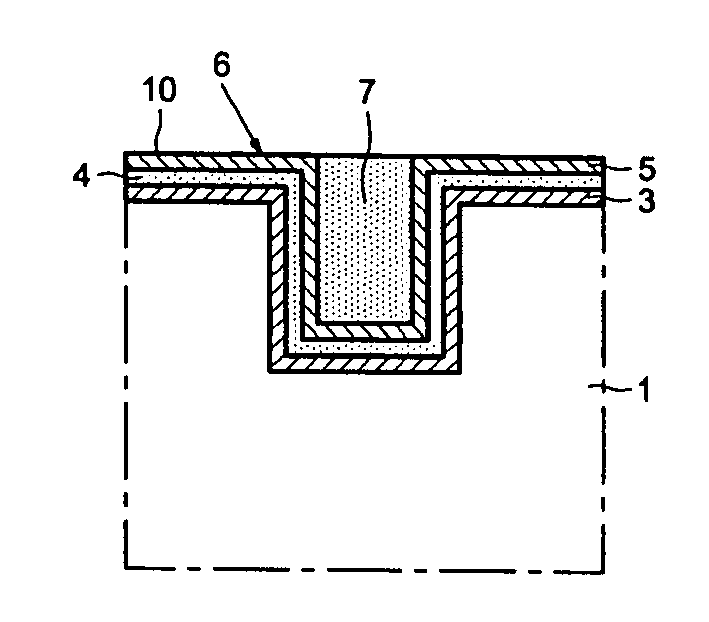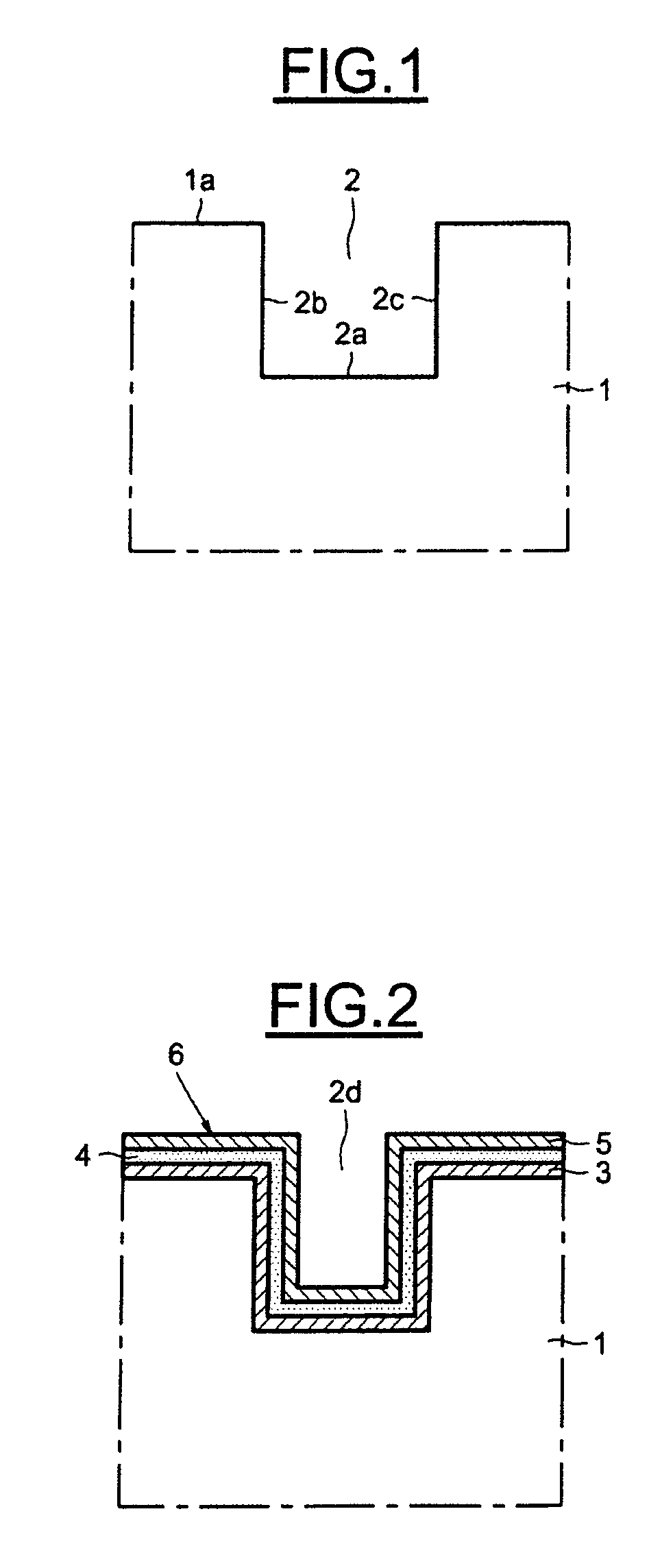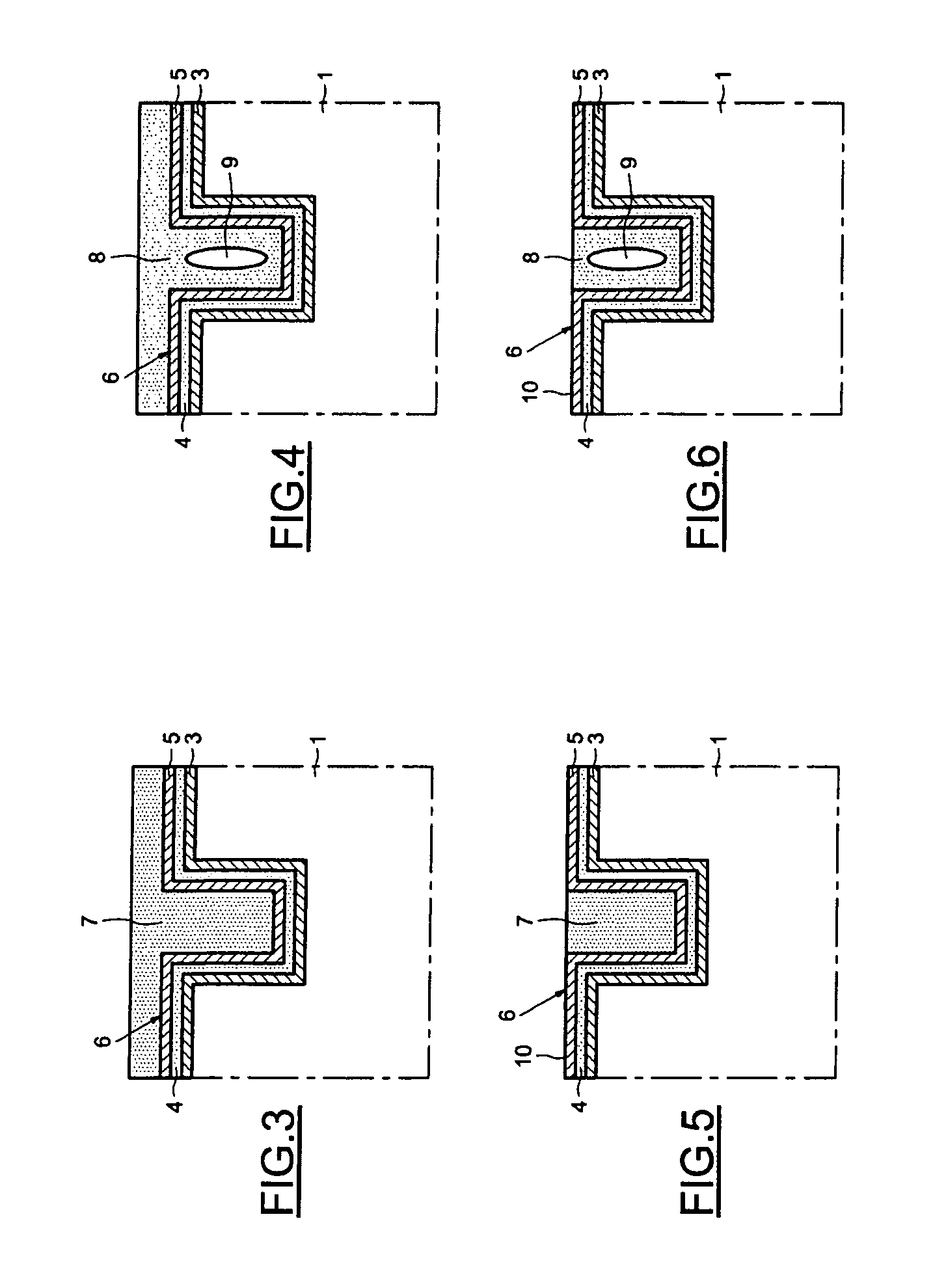Integrated circuit comprising at least one capacitor and process for forming the capacitor
a technology of integrated circuits and capacitors, which is applied in the direction of solid-state devices, basic electric elements, electric devices, etc., can solve the problems of large area occupied by capacitors, high cost, and considerable debonding
- Summary
- Abstract
- Description
- Claims
- Application Information
AI Technical Summary
Benefits of technology
Problems solved by technology
Method used
Image
Examples
Embodiment Construction
[0030] [28] FIGS. 1 to 13 are cross-sectional views of the integrated circuit at various steps in the process for forming the capacitor according to the invention.
[0031]FIG. 1 shows a layer 1, which may be made of silicon, glass, SiO2 or any other insulating material. The layer 1 is typically a substrate with a planar upper surface 1a. A rectangular trench 2 is etched into the layer 1, for example by dry fluorine etching. The trench 2 has a bottom 2a parallel to the planar upper surface 1a of the layer 1, and also parallel edges 2b and 2c of length generally greater than that of the bottom 2a. The depth of the trench 2 is generally between 1 and 200 μm. For example, it is possible to form trenches with a depth of between 1 and 10 μm in an interconnect region or a depth of between 10 and 100 μm in a substrate.
[0032] Next, a capacitor 6 is formed (FIG. 2) by depositing, in succession, a first electrode, in the form of a layer 3, a dielectric layer 4 and a second electrode in the for...
PUM
 Login to View More
Login to View More Abstract
Description
Claims
Application Information
 Login to View More
Login to View More - R&D
- Intellectual Property
- Life Sciences
- Materials
- Tech Scout
- Unparalleled Data Quality
- Higher Quality Content
- 60% Fewer Hallucinations
Browse by: Latest US Patents, China's latest patents, Technical Efficacy Thesaurus, Application Domain, Technology Topic, Popular Technical Reports.
© 2025 PatSnap. All rights reserved.Legal|Privacy policy|Modern Slavery Act Transparency Statement|Sitemap|About US| Contact US: help@patsnap.com



